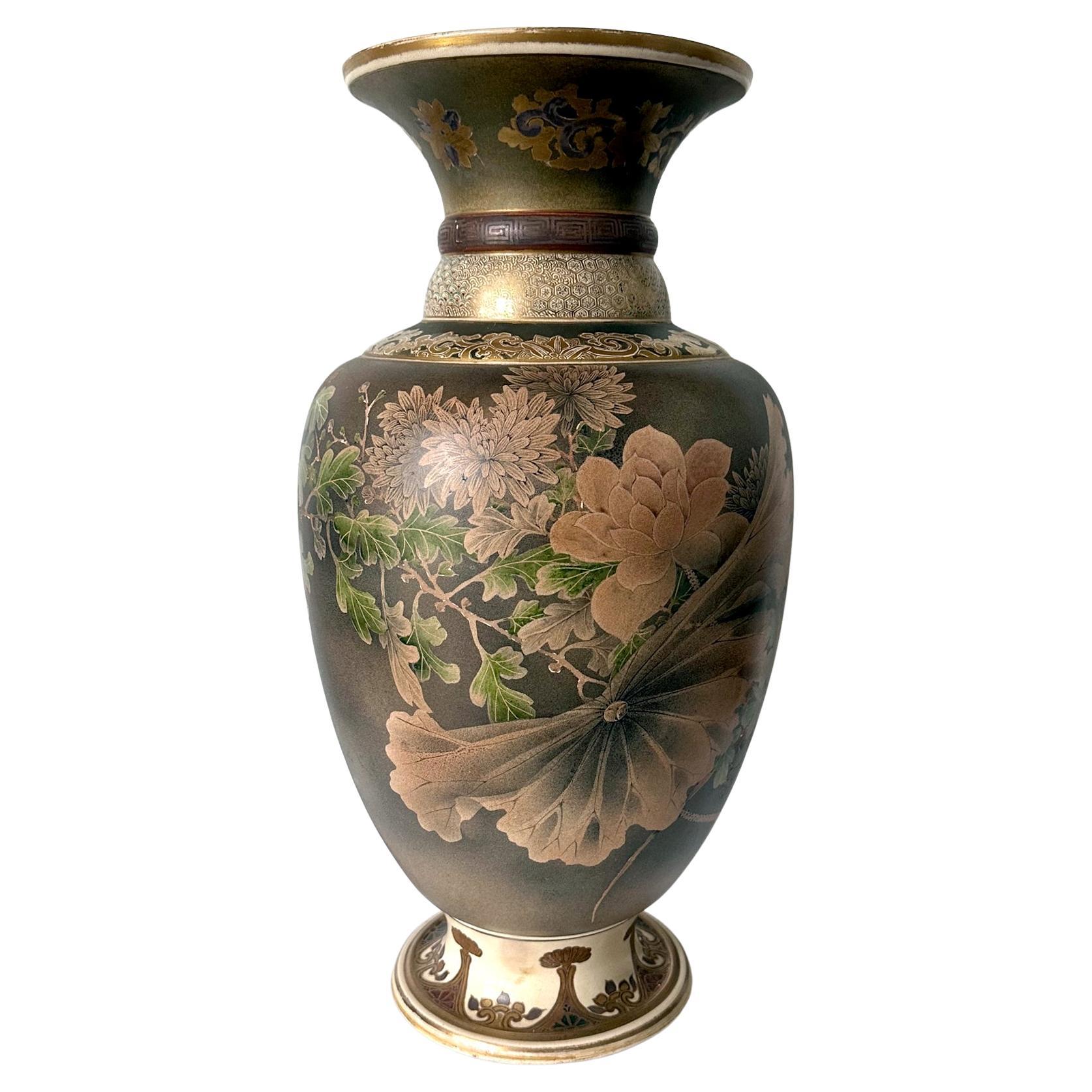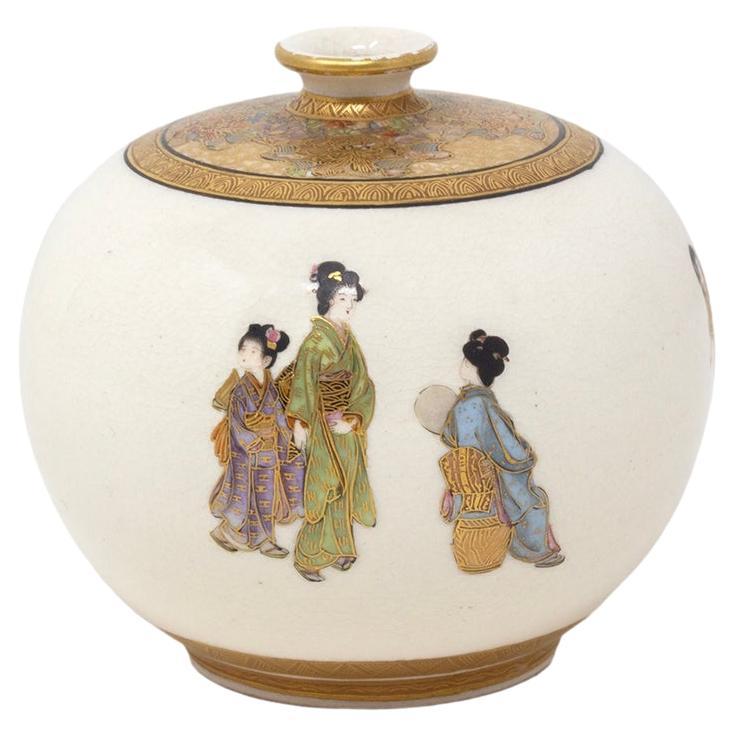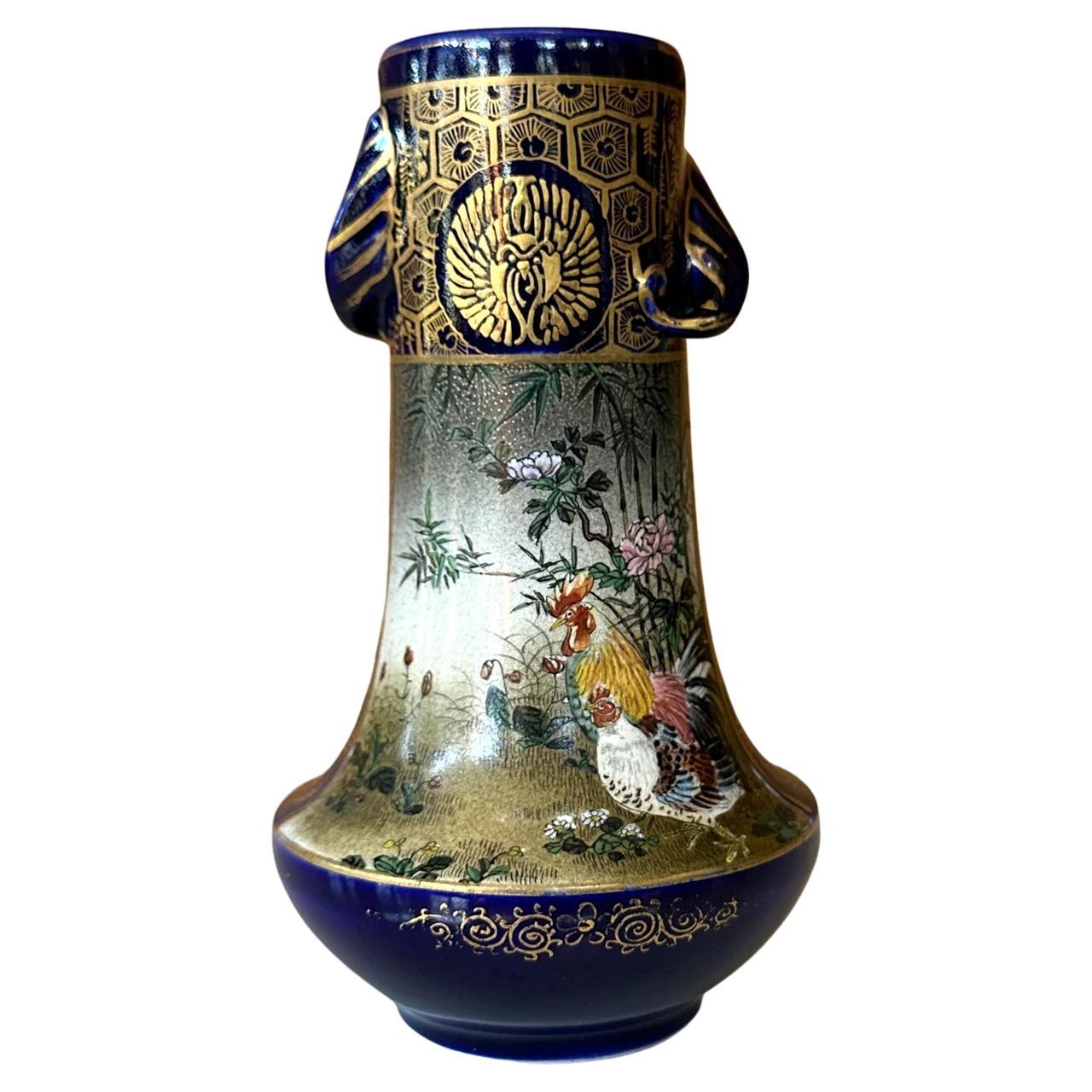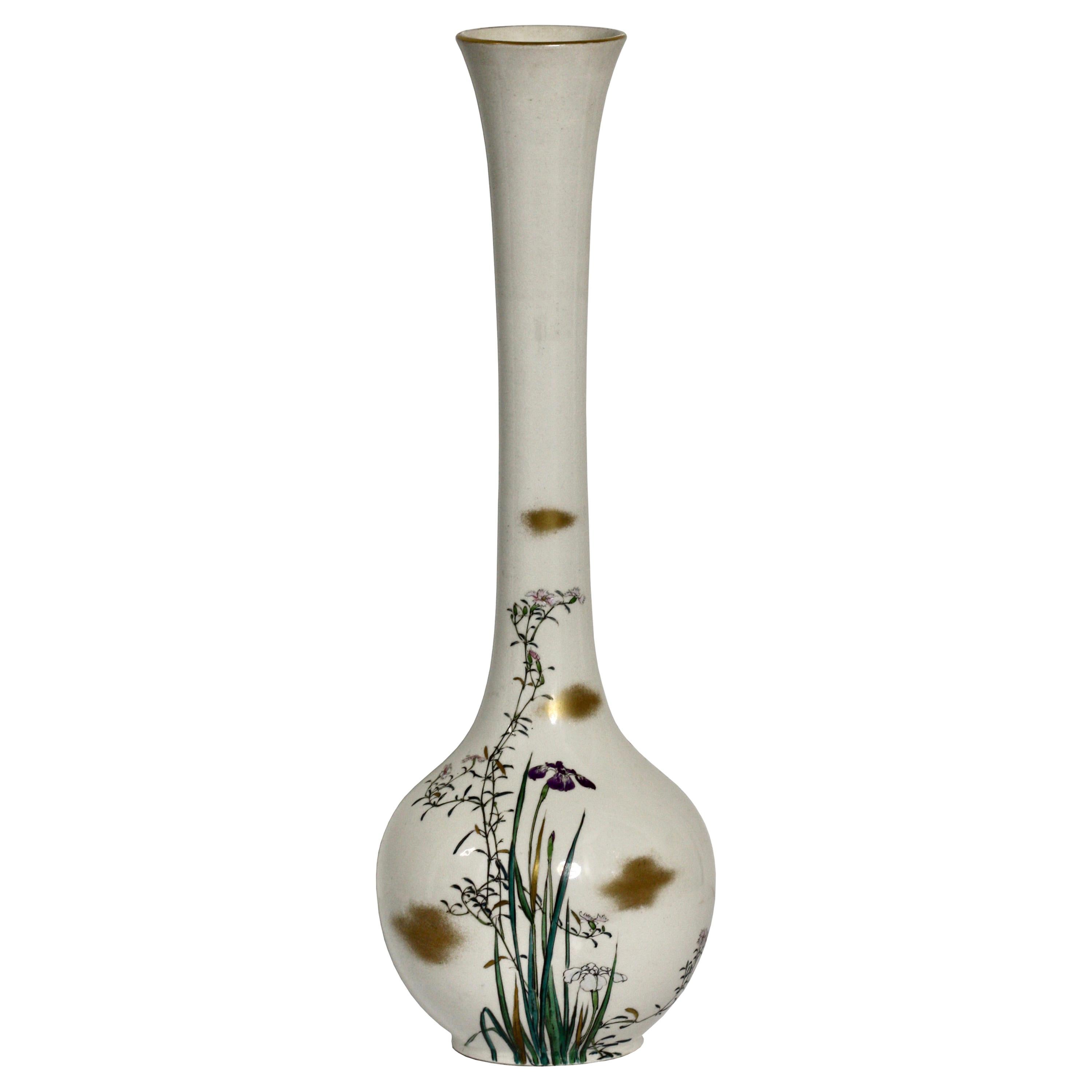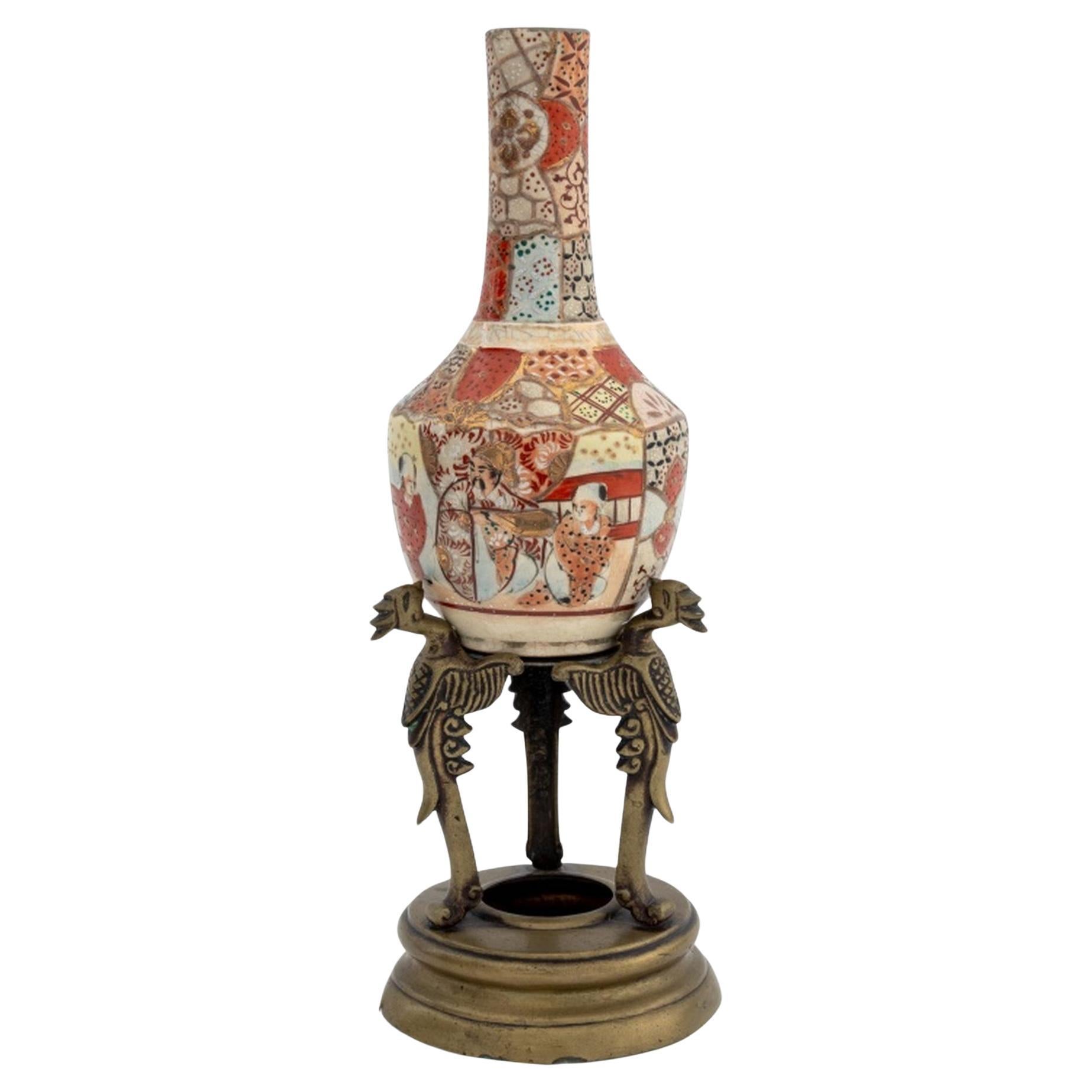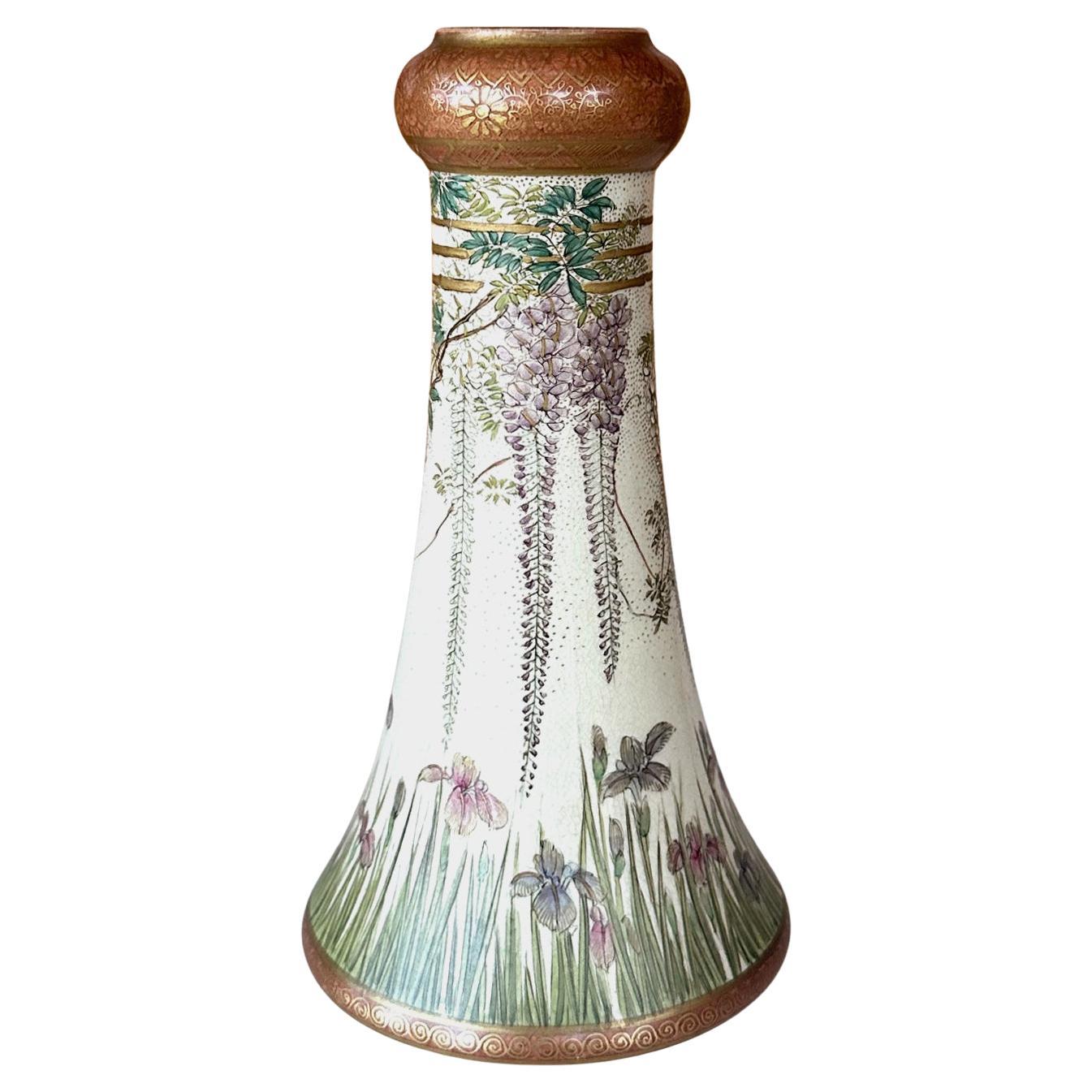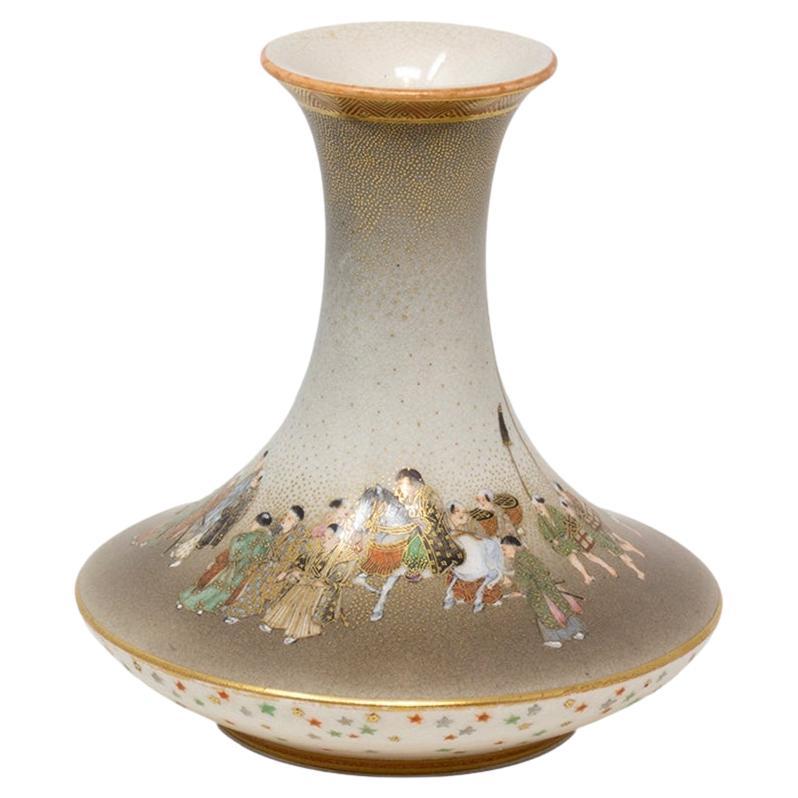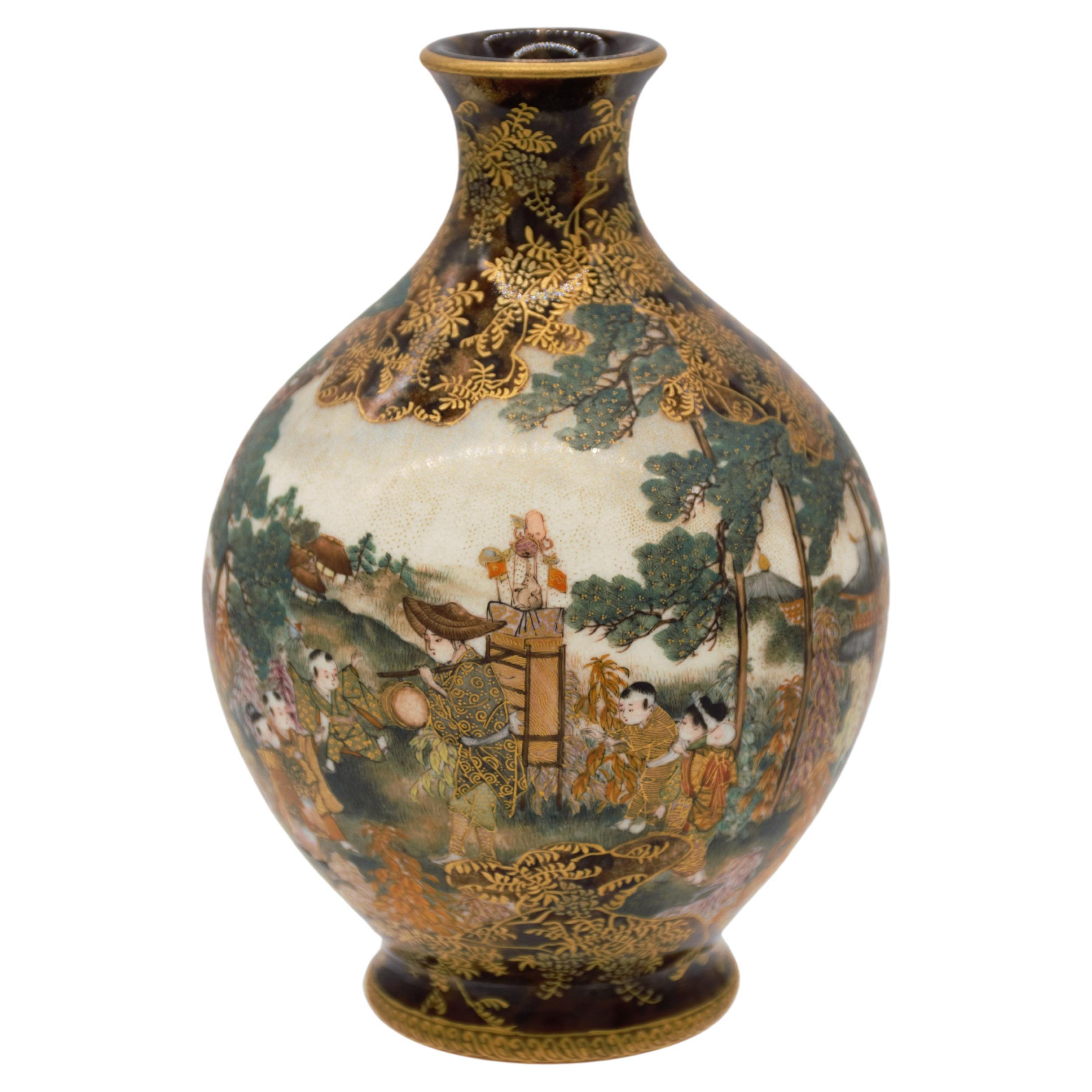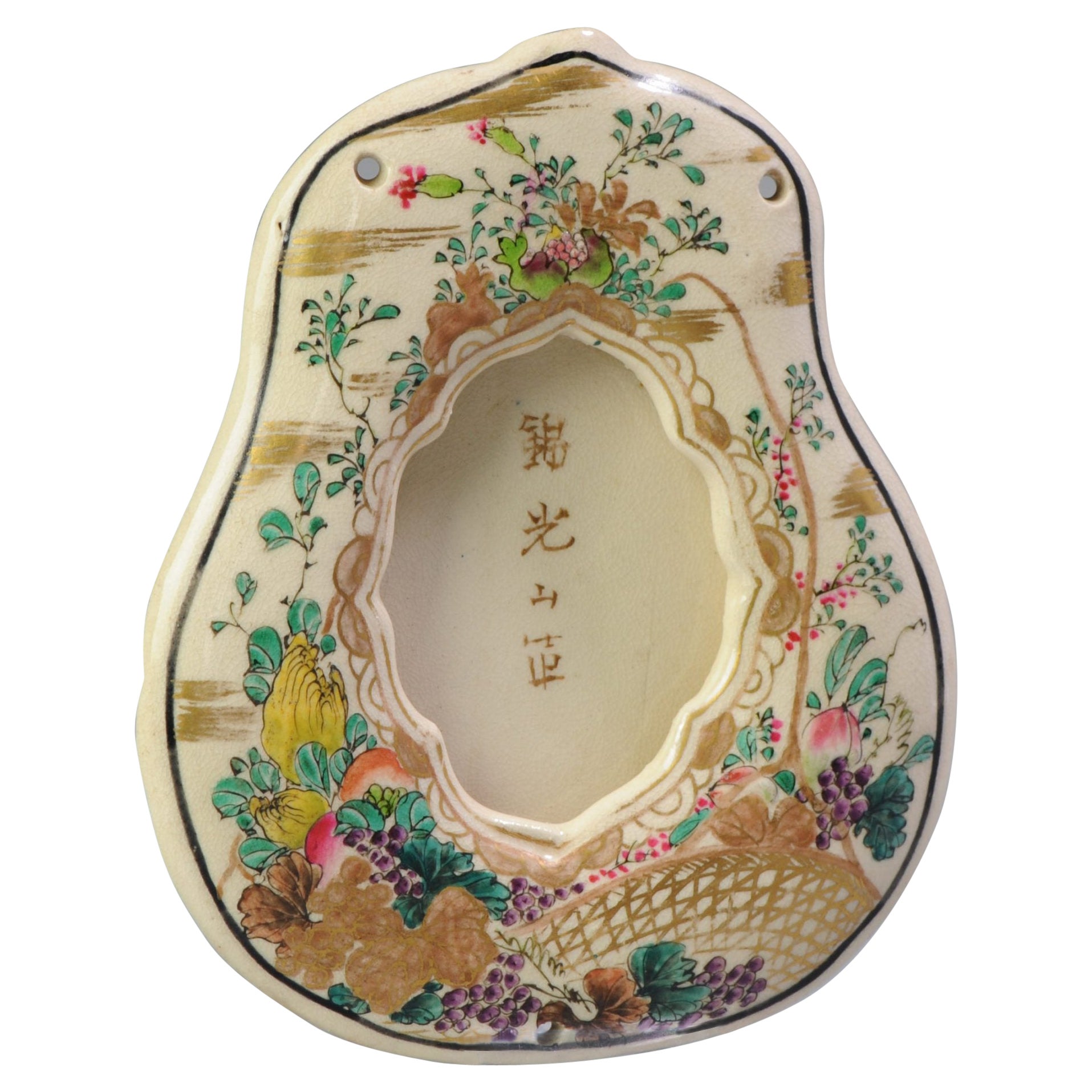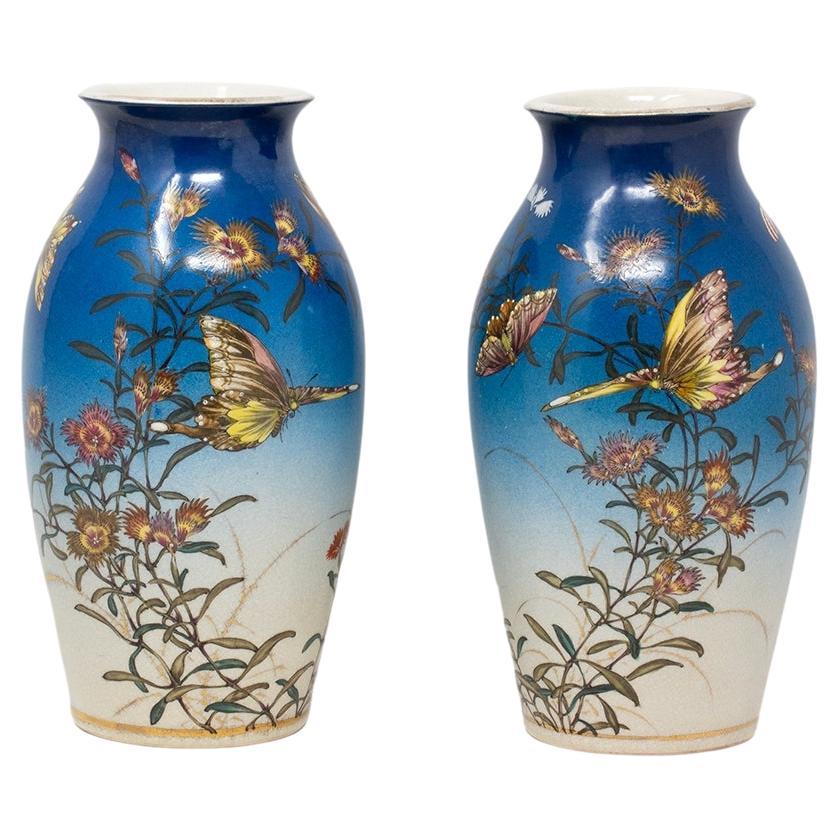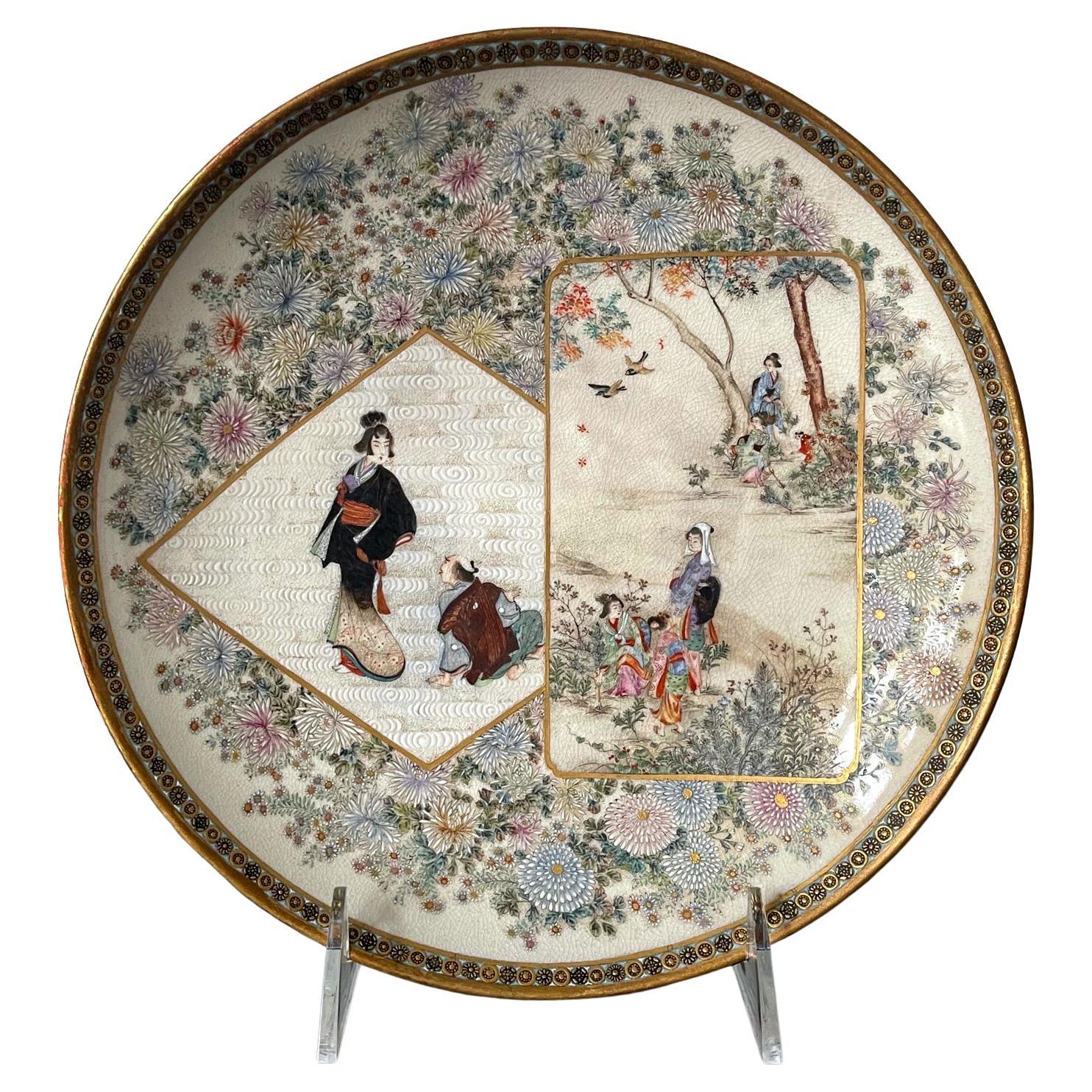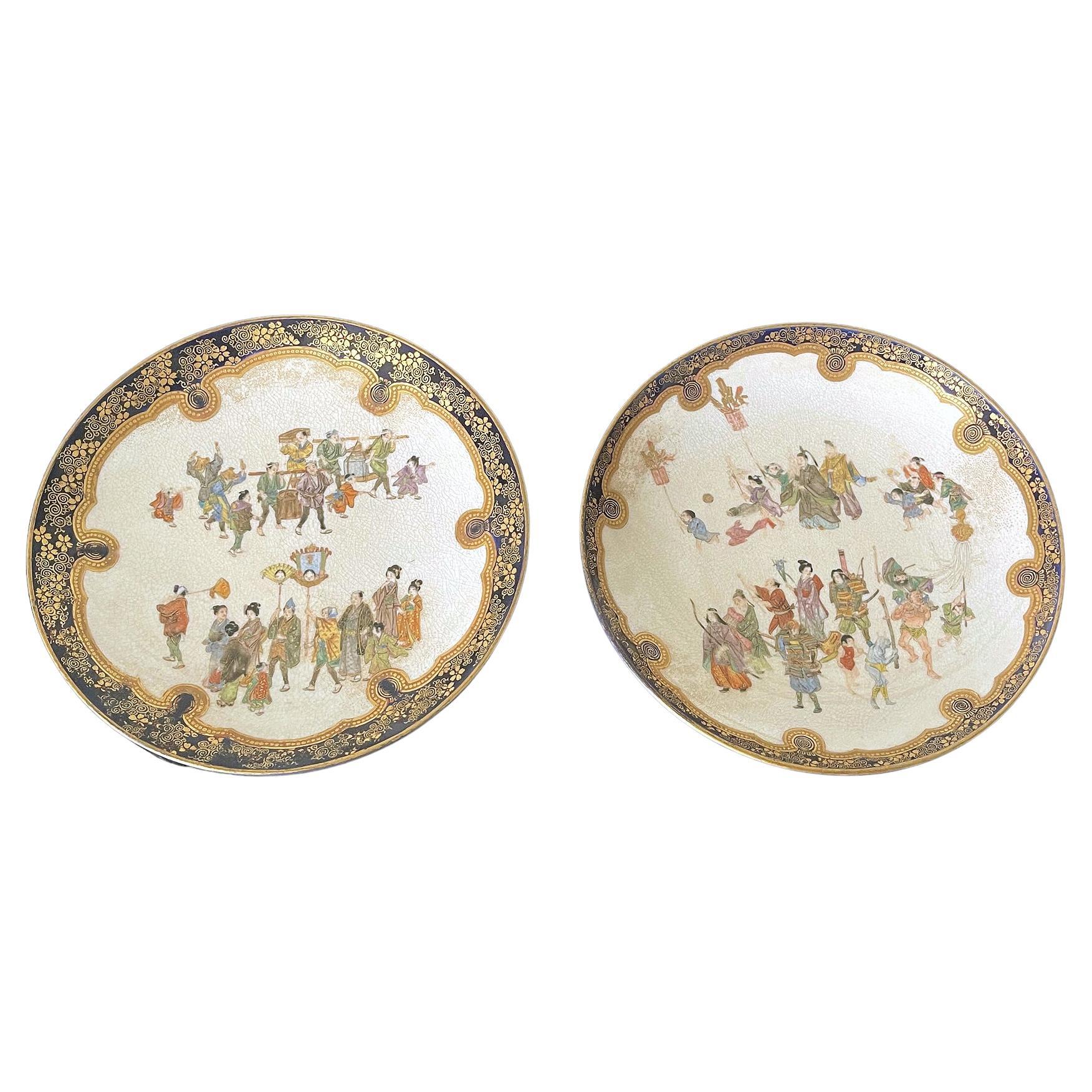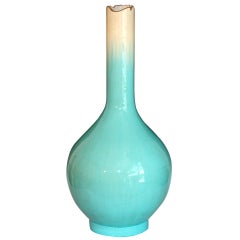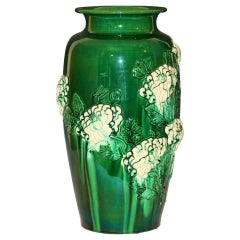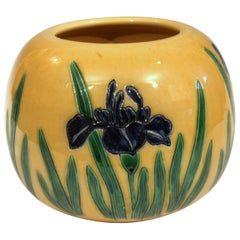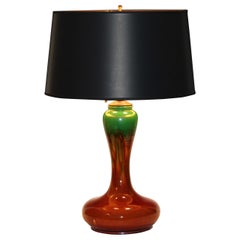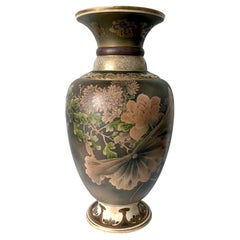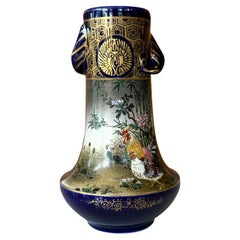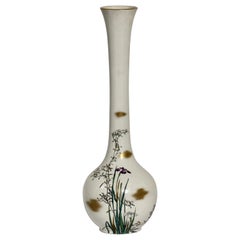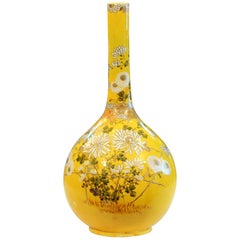
Antique Kyoto Satsuma Kinkozan Japanese Pottery Atomic Yellow Bottle Flower Vase
View Similar Items
Want more images or videos?
Request additional images or videos from the seller
1 of 12
Antique Kyoto Satsuma Kinkozan Japanese Pottery Atomic Yellow Bottle Flower Vase
$795List Price
About the Item
- Attributed to:Kinkozan (Workshop/Studio)
- Dimensions:Height: 18 in (45.72 cm)Diameter: 9 in (22.86 cm)
- Style:Meiji (Of the Period)
- Materials and Techniques:Pottery,Turned
- Place of Origin:
- Period:1910-1919
- Date of Manufacture:circa 1910
- Condition:
- Seller Location:Wilton, CT
- Reference Number:1stDibs: LU856411726381
About the Seller
5.0
Recognized Seller
These prestigious sellers are industry leaders and represent the highest echelon for item quality and design.
1stDibs seller since 2008
254 sales on 1stDibs
Typical response time: 3 hours
Associations
The Art and Antique Dealers League of AmericaAntiques Associations Members
Authenticity Guarantee
In the unlikely event there’s an issue with an item’s authenticity, contact us within 1 year for a full refund. DetailsMoney-Back Guarantee
If your item is not as described, is damaged in transit, or does not arrive, contact us within 7 days for a full refund. Details24-Hour Cancellation
You have a 24-hour grace period in which to reconsider your purchase, with no questions asked.Vetted Professional Sellers
Our world-class sellers must adhere to strict standards for service and quality, maintaining the integrity of our listings.Price-Match Guarantee
If you find that a seller listed the same item for a lower price elsewhere, we’ll match it.Trusted Global Delivery
Our best-in-class carrier network provides specialized shipping options worldwide, including custom delivery.More From This Seller
View AllLarge Kyoto-Awaji Bottle Vase in Sky Blue Crackle Glaze
By Awaji Pottery
Located in Wilton, CT
Large antique Kyoto-Awaji point bottle vase in sky blue crackle glaze with color draining away from the pale mouth rim. 33" high, 16" diameter. The rim, at some point damaged, has be...
Category
Early 20th Century Japanese Ceramics
Materials
Pottery
Large Japanese Awaji Pottery Chrysanthemum Vase
By Awaji Pottery
Located in Wilton, CT
Large Awaji pottery vase with sprigged chrysanthemums and green and white glazes, circa 1930. Measures: 18 1/4" high, 9 1/2" diameter. Excellent condition.
Category
Vintage 1930s Japanese Arts and Crafts Ceramics
Materials
Pottery
Large Tanabe-Awaji Pottery Japanese Incised Iris Signed Jardinière Bowl Vase
By Awaji Pottery
Located in Wilton, CT
Tanabe-Awaji Japanese Studio Pottery vase with three incised iris vignettes, circa 1920s. Measures: 9" high, 10" diameter. Impressed mark ...
Category
Early 20th Century Japanese Art Nouveau Vases
Materials
Pottery
Antique Japanese Awaji Pottery Organic Art Nouveau Gourd Form Lamp
By Awaji Pottery
Located in Wilton, CT
Awaji Pottery lamp in sensual gourd form with green over caramel glaze, circa 1910s. Good quality double cluster S-form socket. 29" high overall, 18" to top of cap, 7 1/2" diameter. ...
Category
Vintage 1910s Japanese Art Nouveau Table Lamps
Materials
Pottery
Awaji Pottery Japanese Scholar's Desk Yellow Brush Pot/Pencil Cup Bronze Weave
By Awaji Pottery
Located in Wilton, CT
Awaji Pottery brush pot vase in sunny yellow glaze with bronze weaving. From Tamura Kyuhei's Sumoto kiln. 3 3/4" high, 3 1/2" diameter. Impressed export and kiln marks. Some staining...
Category
Early 20th Century Japanese Arts and Crafts Ceramics
Materials
Pottery
Vintage Awaji Pottery Art Deco Atomic Yellow Vase
By Awaji Pottery
Located in Wilton, CT
Vintage Awaji Pottery Art Deco atomic yellow with two little angular handles on the flattened shoulder. Nice form and striking color. Circa 1930. Impressed marks. 7" high, 7" diamete...
Category
Vintage 1930s Japanese Art Deco Vases
Materials
Pottery
You May Also Like
Large Japanese Satsuma Ceramic Vase Kinkozan
By Kinkozan
Located in Atlanta, GA
A large Japanese ceramic vase from the end of Meiji period circa 1890-1910s by Kinkozan (1645-1927). One of the largest studio manufacturers of the export ceramics at the time based in Kyoto. In the typical style of satsuma made at the turn of 20th century, the vase is elaborately decorated with a rather unusual kinran-de (gold paint) and green enamel highlight on a mottled brown background. The painterly decoration depicts a large seasonal floral arrangement in a circular fashion. Besides the obviously superb craftsmanship, what sets this particular vase apart from many lower quality and mass-produced pieces is its tone-on-tone color pallet that is visually somber and the small and sensitive details that heralds the change of the seasons. When the viewer goes beyond the first casual glimpse of the blossom and foliage, one would notice that on the edges of certain leaves as well as along the stalks, there accumulates a very thin layer of the white dust that represents the frost. The flower in bloom are chrysanthemums. Despite of being splendid, they are the messengers of the autumn. The large lotus leaf was subtly rendered in a bended and slightly withered manner, just past its prime. Although the lotus is still in bloom, the prominent seed pod indicates it may be the last for the season. The sentimental capture of the change of the seasons is not unusual in Japanese art. This vase poetically represents such a subtle transition from summer to fall, perhaps depicting the very first frost.
The neck of the vase is also slightly unusual with two rolled rings...
Category
Early 20th Century Japanese Meiji Ceramics
Materials
Ceramic
Japanese Antique Meiji Period Satsuma Vase by Kinkozan
By Kinkozan
Located in Newark, England
GLOBULAR FORM MINIATURE VASE
From our Japanese collection, we are delighted to offer this Japanese Satsuma Vase by Kinkozan. The Satsuma Vase made from earthenware pottery is potted...
Category
Antique Early 1900s Japanese Meiji Ceramics
Materials
Ceramic, Earthenware, Pottery
Fine Japanese Ceramic Satsuma Vase by Kinkozan
By Kinkozan
Located in Atlanta, GA
A miniature Japanese ceramic vase from the end of Meiji period circa 1880s- 1910s by Kinkozan (1645-1927). One of the largest studio manufacturers of the export ceramics at the time ...
Category
Early 20th Century Japanese Meiji Ceramics
Materials
Ceramic
Kinkozan, Japanese Satsuma Vase, Meiji Period
By Kinkozan
Located in West Palm Beach, FL
Kinkozan, Japanese Satsuma vase,
Meiji Period (1868-1912)
Of baluster form with an elongated neck decorated in polychrome enamels and gilt on a clear crackle glaze in an Art-Nouvea...
Category
20th Century Ceramics
Materials
Ceramic
Japanese Satsuma Pottery Bottle Vase
Located in Astoria, NY
Japanese Satsuma Pottery Bottle Vase, with painted and gilt figural interior scenes mounted on brass griffin base. Overall: 12.25" H x 4.75" Diameter. Provenance: From the Collection...
Category
20th Century Japanese Meiji Ceramics
Materials
Brass
Fine Japanese Enameled Satsuma Vase by Kinkozan Meiji Period
By Kinkozan
Located in Atlanta, GA
A ceramic satsuma ware vase with very fine surface decoration made by Kinkozan circa 1880-1900s of late Meiji Period. The vase is of an elegant and relatively rare form with a trumpet shape body and the so-called garlic neck and opening. The surface is exquisitely decorated in a floral scheme with gilt and a light jewel-tone enamel. The top part showcases large bundles of wisteria blossom in white and purple, cascading down from a gilt wood trellis...
Category
Antique 1880s Japanese Meiji Ceramics
Materials
Ceramic
